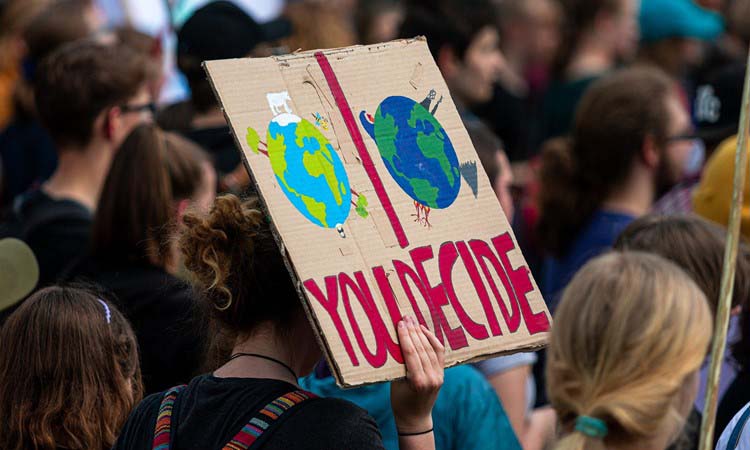Ending the first week of COP26, today’s theme circles on youth and public empowerment, with a goal of “elevating the voice of young people and demonstrating the critical role of public empowerment and education in climate action.”
According to the brief released by United Nations Framework Convention on Climate Change (UNFCCC) and Youth NGO (YOUNGO), 59% of the youth today are worried about Climate Change and, according to a poll of the Global Solutions, one in five young people globally believes that it is too late to fix climate change. With such uncertainties and fear about the future, an increasing number of young people are taking matters into their own hands: calling for attention and action in ways that they can for current and future generations.
Youth participants have been engaging in UNFCCC conferences for over a decade. However, limitations and ambiguities to youth involvement are still seen. Instances of isolating youth participants away from plenary halls, the additional tickets needed to access sessions, the seemingly inefficient event system, and the lack of space, amongst other barriers, all prevent youth voices from being heard. Calls to stop youth inclusion being treated as tokenistic in nature came on the first day of the conference, with officials urged to not just listen to the youth’s voices and ideas, but to also seriously consider them in policy formulation. With the global youth population growing, its role in climate change and governance must be prioritized.
But what role does the youth actually play? Kerry Smith, one of Walker Institute’s on the ground PhD students in Glasgow, was able to interview youth official observers from the University of Edinburgh: Galina and Mennat. Mennat explained the importance of youth inclusion as, “[In the same way that] the poorest people will be paying the highest price for climate change… young people have contributed very little- a lot of them none- to climate change but will suffer [the most from] its impacts”. Knowing and acting upon this is thus deemed vital for the survival of the Earth and the younger generation. Galina, on the other hand, considers the youth’s role as “bridging the gap between young and very young people to do anything – the babies and unborn – to the adults who seem to have forgotten how it was to be a child and have a future to live on; have something to hope [for] and something to dream about”. The in-between generation thus has a role to play in ensuring that the future generation do not have their childhoods stolen from them.
In a Zoom interview with Jefferson, an environmental activist and an official observer representing the Loss and Damage Youth Coalition, he stressed the fact that the youth can “raise awareness and demand for action and accountability from government officials, and that pressure from the youth is direly needed for the government to act now”. While Julze, an official observer of COP26 and fresh out of COY16, also shared his insights on the youth as the people who can “continue to educate others about climate change… and provide vigilance and hold the people in power accountable”.
When asked about what they most wanted to get out of COP26, all are on the same page. All demand “a plan that leads to action and not just words that we hear every single year”, “for the government to create an implementation plan and actually commit to it and most importantly, apply it in practice”, “for the youth interests to be included in policy formulation,”, and ultimately for the youth to be seen as decision makers: their demands not only listened to, but actually considered and met.
What is clear is that youth inclusion at COP26 is vital, that the youth are not just the “young angry mob”, but are global citizens keenly looking for solutions: global citizens ready to hold politicians accountable, and global citizens ready to act for their future.
Written by Kringle Mercado, Msc Student and COPCAS participant


